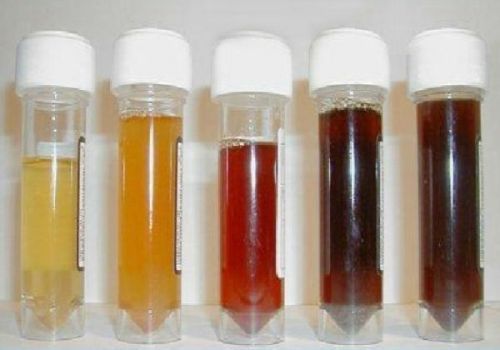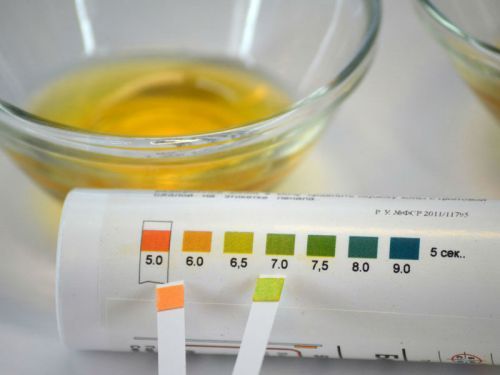Everything that enters the human body, there is a unique filtering organs of urine formation in the kidneys. The essence of this process lies in the separation and reabsorbtion (reverse absorption into the bloodstream) of vital elements and removal of unnecessary substances from the body in the composition of body fluids – urine (or urine).
This complex substance, carries information about the state of human health, her research in the laboratory is used for the detection of many pathological processes.
Urine analysis performed in specialized laboratories by qualified professionals, the results help the doctor accurately diagnose the disease, prescribe a rational course of treatment and to monitor the health of the patient.
In our article we will focus on the mechanism of urine formation, what should be the urine of a healthy person – evaluating any of the indicators included in clinical research and what are the rules of the middle intervals.
Mechanisms of formation and excretion of urine
The composition of the urine consists of water, certain electrolytes, and the end products of metabolic processes of cellular metabolism, which is reported in the circulating blood and are excreted by the kidneys.

Mechanism of urine formation regulate the nephron, consisting of:
- from glomerulus – network of capillaries;
- capsule of Shumlyansky-Bowman – double-walled bowl that encloses the glomerulus;
- system of tubules – loop of Henle, proximal and distal segments, the connecting channel and the collecting tube.
The process of urine formation begins with the formation of the glomerular ultrafiltrate (primary urine), which is the following:
- coming into the glomeruli blood, through a specific membrane of the nephron is filtered and loses a significant portion of soluble mineral elements, fluids and toxins;
- primary urine, which includes water, glucose, excess of salts, amino acids, urea, low molecular weight compounds and creatinine, enters the renal capsules and tubules.
The second part of the mechanism of urine formation is the process of reabsorption – movement of nutrients back into the circulating blood through peritubular vessels. The complex process of secondary formation of urine begins in the proximal segment of the tubules continues in the loop of Henle, distal area and the collecting tubes.

In the body of a healthy person none of the vital elements are not excreted in urine – they are completely back in blood.
The third process of urine formation – the formation of tubular secretion (secondary urine), in which the primary urine secreted ammonia, residues of medicines, potassium ions and hydrogen. This mechanism is very important to maintain the human body acid-base balance. The functional activity of the kidneys regulate the nervous system and humoral factors, hormones and products of protein breakdown.
Urine is a reflex process-from the renal pelvis substance enters the ureter, bladder and excreted through the urethra
The composition of normal urine
The biological fluid contains about 90% water and 10% dissolved inorganic (table salt, potassium oxide, phosphoric acid and sulfuric acid) and organic compounds, which are predominantly products of protein metabolism (urea, creatinine, uric acid and hipurovoyi).
Due to the renal excretion of salts in the circulating blood is maintained by their permanent staff. Normal urine also contains gases (including carbon dioxide and), corpuscles and cells closeplease epithelial tissue of the urinary tract.
The volume, composition and properties of the selected human urine are dependent on certain conditions:
- the humidity and temperature of the environment;
- the quantity and quality of consumed foods;
- the nature of employment;
- the amount of liquid.
The amount of urine may decrease with increasing sweating, reducing consumption of water and fascination with xerophagy. Wet and cool weather, the consumption of liquid meals and a large volume of water, the frequency of emptying the bladder increases. High intensity of urinary output are typical for daytime, night frequency of emission of urine is significantly reduced.
Any changes to the metabolic processes in the body and impaired functional activity of the kidneys affect the composition of the produced biological fluid. That is why every person feel unwell, conduct General clinical analysis. We consistently look at what should be the urine in health and what factors influence change settings.
The proportion
The range of indicators of relative density of urine ranges from 1006-1028 g/l.

For measuring specific gravity of urine using a special device – a hydrometer
Gipostenuriya (reducing the relative density to 1002 g/l) is observed at:
- the decreased ability of the kidneys to concentrate urine;
- the increase in the volume of urine;
- the consumption of large quantities of water.
Gipermenorea (increase in relative density of more than 1031 g/l) characterized by:
- to reduce the number of allocated urine;
- acute glomerulonephritis;
- systemic diseases;
- insufficient function of the heart and vascular systems;
- toxemia of pregnancy;
- dehydration.
The shade of urine
Normal biological fluid has a straw yellow color and its intensity depends on the amount and relative density of urine and the presence of bile pigments (urochrome and urobilin) and of their number.
The shade of the urine changes, jaundice, renal hemorrhage and pathological processes in the urinary tract
As a rule, concentrated urine, having a deep yellow color, has a high relative density. And Vice versa – a little concentrated urine is a very light shade has a low density and excels in large volume.
Change the color of the biological fluid can be observed in diseases of the urinary system, consumption of certain foods (beets, pumpkin, spinach, rhubarb, tomatoes) and the use of drugs.
The reaction medium is urine
The pH of the biological fluid of a healthy person taking a variety of foods, ranging from 4.5 to 6.5 – slightly acidic reaction. The predominance in the diet of plant-based foods change the pH of urine to alkaline, foods with a high content of animal protein – acidic.

The change in the pH of urine occurs in various pathologies:
- the acidity of the medium is increased during fever, diabetes, prolonged starvation and lack of kidney function;
- pH becomes alkaline in infectious processes in the urinary tract (cystitis, pyelonephritis), hematuria, vomiting, diarrhea.
To determine the reaction medium urine just enough to dip in a biological substance of the special test strips and compare its readings with the scale on the package
Chemical characteristics of urine composition
Modern laboratory centres equipped with automatic analyzers, which measure the performance of the chemical composition of urine. These kind of research involves the definition of several key performance indicators.
Total protein
Normal urine contains the minimum amount (in the form of footprints) that cannot be detected by qualitative method.
In case of detection of protein in urine of a healthy person is associated with physiological causes, this phenomenon is temporary and occurs after:
- excessive exercise;
- strong emotional shocks;
- attacks of epilepsy;
- abuse of protein food.
Functional proteinuria provokes hemodynamic disorder caused by fever, hypertension, hypothermia, heart failure.
Pathological proteinuria parts:
- on the kidney associated with fever, insufficient functional activity of cardiac muscle, pyelonephritis, glomerulonephritis, hypertension, tuberculosis of the kidney;
- extrarenal, due to the admixture of protein, which is secreted from the urinary tract when urethritis, cystitis, prostatitis, pyelitis, vulvovaginitis.
Glucose
Normal urine does not contain it. Glucosuria can be:
- physiological – when consumption of foods with lots of carbohydrates, emotional stress, use of certain medications, heavy metal toxicity;
- pathological – occurs in diseases of the endocrine system (diabetes, hyperthyroidism, syndrome Itsenko-Kushinga).
Ketone bodies
Acetone, acetoacetic and hydroxybutyric acids, which may be present in the urine of a healthy person when you eat large quantities of fat and protein and low carbohydrate intake.
The presence of high content of ketones in the urine is observed:
- when sugar diabetes;
- prolonged fasting;
- severe infectious diseases;
- vomiting;
- diarrhea;
- alcohol poisoning;
- neuro-arthritic pathology.
Microscopic composition of urine
In normal urine, red blood cells are not detected, their presence is associated with infectious, autoimmune or organic lesions of the kidneys. Leukocytes in urine of a healthy person contains not more than 6-8 in field of view. Population growth is evidence of the development of the inflammatory process in the organs of the urinary system.
There are two types of the urinary sediment: the fugitive (salt crystals and mucus), organized, it includes erythrocytes, leukocytes, epithelial cells
Normal epithelium present in the urine in small quantities. The number of cells of the transitional epithelium is increased in urolithiasis (kidney stones), cystitis, poisoning of the body, tumors in the urinary tract. The renal epithelium appears during intoxication, nephritis, violation of the circulation of blood.
In conclusion, the above information I want to add that a healthy person during urination is not experiencing any discomfort, burning, itching and painful sensations. Normal urine should not have rich shade, muddy sediment, stable foam on the surface. In cases where the separated urine is listed in our article deviations from the norm, you should not engage in self-diagnosis and self – treatment, you must seek professional medical help.




as soon as I found this internet site I went on reddit to share some of the love with them.
I am actually glad to read this website posts which includes plenty of
useful facts, thanks for providing these data.